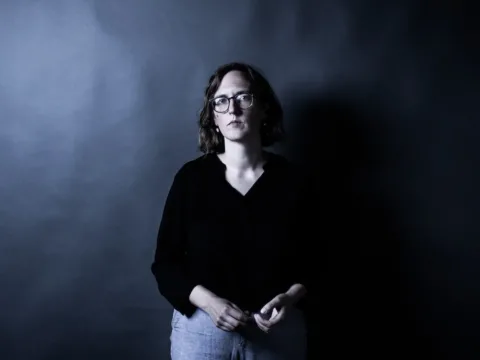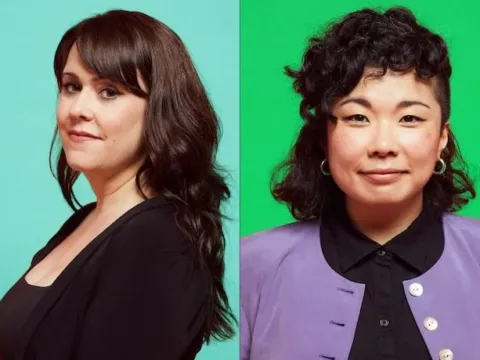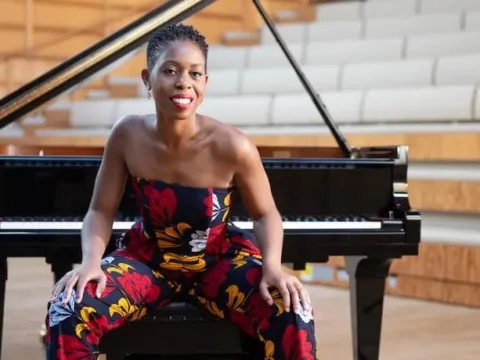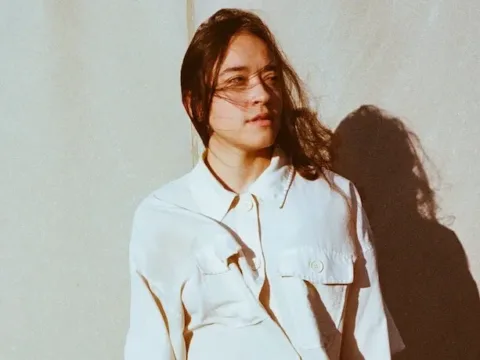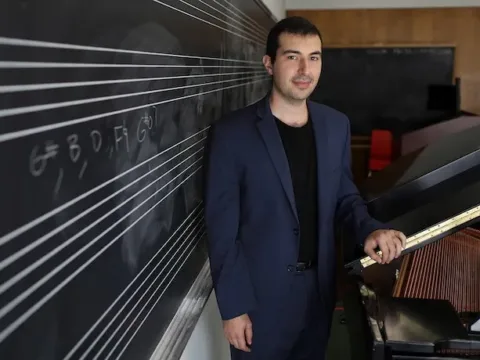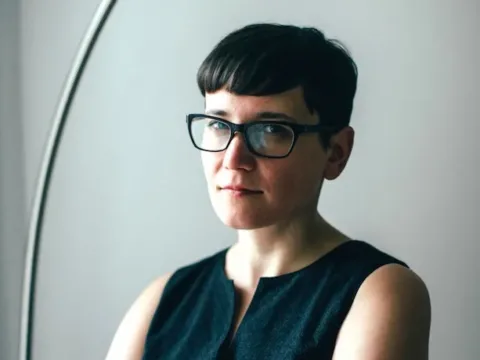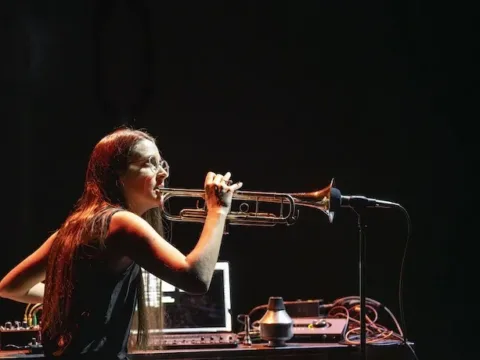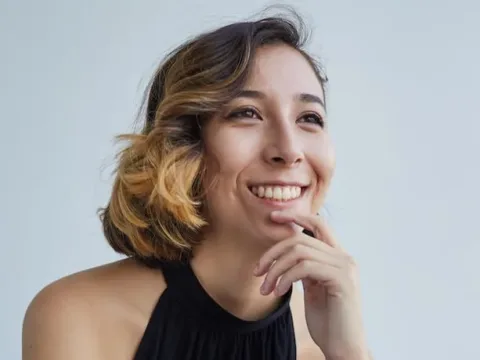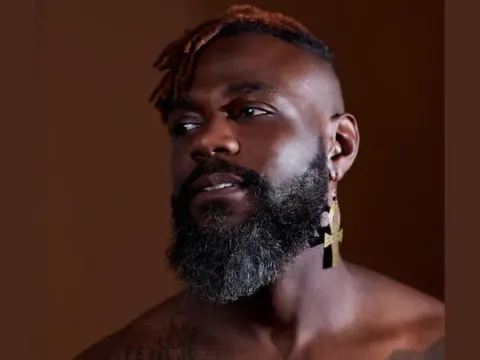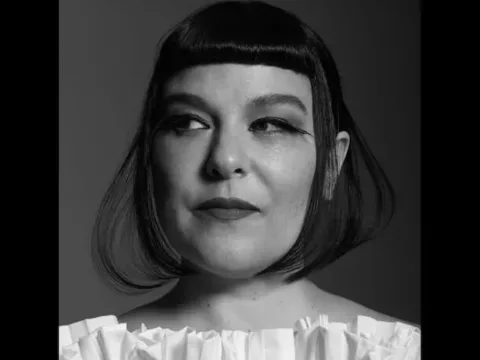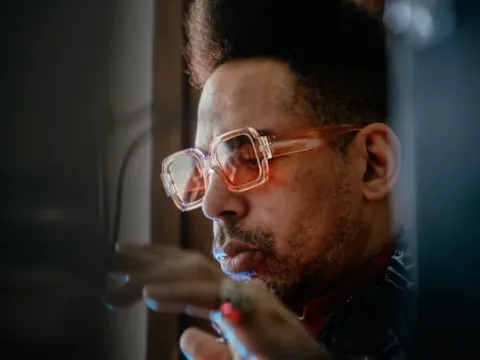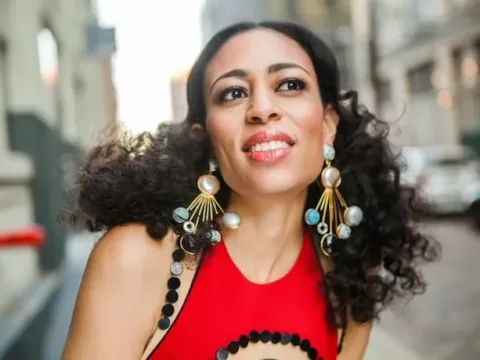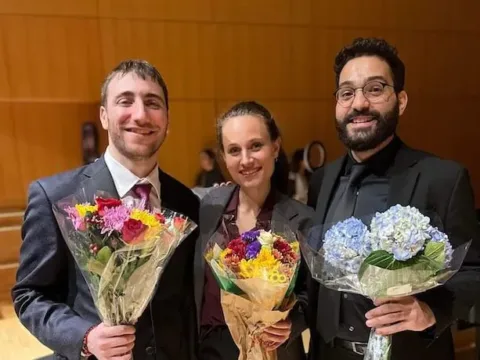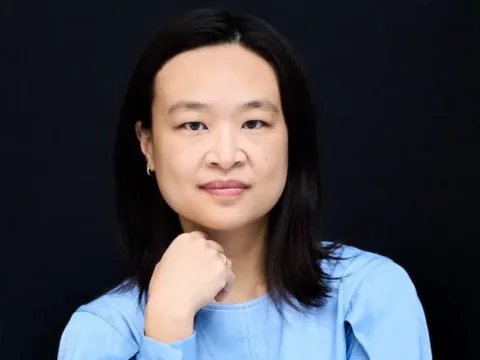What first inspired you to paint while listening to music?
I was struggling creatively, and painting to music was kind of a prompt. It forced me to start when the music started and finish when it stopped. Giving myself those limits pushed me past judging or questioning myself, which is the kind of thing that stops you before you have a chance to grow.
Painting to music also changed how I listened. I started to really pay attention to the sounds, how I felt while listening, and how that could change depending on the circumstance (for example, listening to the same music on different days, or the first time I heard a piece versus the tenth). I’ve always been fascinated by the way music–which is theoretically just sound waves hitting your ears–can manipulate or amplify your emotions. Painting while music plays seems like it should be distracting, but I find it actually makes me focus more intently.
At first I painted to all kinds of music, but I was introduced to contemporary classical through a friend who plays bassoon. I started to explore the genre, painting to recordings. Eventually I began performing on stage! Live-painting on stage with musicians is a huge rush and is a whole new way to experience music. For episode one of the podcast, I interviewed Vince Ho about his piece Sandman’s Castle, and later performed the live-painting on stage as part of the New Works Festival with Timepoint Ensemble.
Under Sea, Above Sky from Sunita LeGallou on Vimeo.
Were there any other podcasts about the process of artistic creation or the intersection between painting and music that drove your desire to create Music for PhDs?
The idea for the podcast really came from conversations I was having with composers. When I prepare for a live-painting performance, I listen to the music on repeat and try to learn as much as I can about it. I wanted to share those conversations, and thought it would make a great podcast.
The name “Music for PhDs” is meant to be a little tongue-in-cheek. Contemporary classical music can seem aloof or mystifying to people who aren’t musicians or composers themselves. I wanted to approach it like an audience member (since that is what I am). As a non-musician, I had all these questions–what is this sound? Why is it like that? The title Music for PhDs is my way of saying you don’t actually need a PhD to appreciate this kind of music.
I haven’t found other comparable podcasts (although I’m all ears, if someone directs me to one!) but I took a lot of inspiration from Listening to Ladies, which features interviews with female and non-binary composers.
You have a Bachelor’s degree in environmental science! Would you talk to us about how that background informs and colors your work in the arts?
Science and art are two lenses through which I view the world. So, when I paint to music, I’m chronicling a very intuitive, emotional response. It’s sort of a roadmap of my personal journey as I listen to the piece. At the same time, I’m very curious about how music affects us all generally–why humans have it, what it does to us, the way it lights up our brains. Each episode of the podcast features a science segment with Dr. Kate Einarson, a scientific researcher who studies music, human development, and behavior change. (Dr. Kate is the real-live PhD on Music for PhDs.)
My goal for the podcast is to approach contemporary classical music from both angles. Firstly, there is the emotional, personal side (how music affects me), which I interpret through my art. Then there is the more universal side (how music affects us all, and why, and through what means), which we discover through scientific research. The science of music is obviously a huge topic, and the Music for PhDs podcast isn’t attempting to unpack it all. But there are lots of ways to be curious.

What have you learned from the first season of Music for Phds, and how is that shaping your planning for season two?
Oh, I learned so much! A lot of it was the technical know-how, teaching myself to edit audio and how hosting works and things like that–the nuts and bolts of podcasting. Podcasts are quite labour intensive; a half-hour episode can take 20-40 hours of behind-the-scenes work. I actually ended up with a repetitive strain injury on my dominant hand!
But I would say my biggest takeaway was the importance of having a narrative arc for each episode. My interviews with most of the composers were quite long, generally an hour or more. I didn’t want to just slap that all up online verbatim, so I did extensive editing and condensing of interviews. By choosing what to keep and what to leave out, I found that inevitably, a story begins to emerge.
This narrative arc is something I want to cultivate more deliberately over the next season. For instance, I would love to partner with a festival or performance group, and curate podcast episodes that would align with or expand upon their concert season. (Although, who knows what live concerts will look like in a post-COVID world.) Alternately, I might focus on a particular question or theme within the science of music, which will influence the pieces I paint to and the questions I ask. I am actively looking for collaborators of all kinds right now. So if you are a composer, performance group, research team or arts organization interested in exploring live-art, please reach out!
Finally, I also hope Season Two continues to push and develop my artistic practice. I started the podcast to have more context for my artwork, and so the series of paintings from Season One is quite distinct and–to my mind–more in-depth from my previous work. I am really pleased with that series, but I also want to expand on that going forward and not simply repeat myself.
Loci from Sunita LeGallou on Vimeo.
If you could interview anyone, dead or alive, for the Music for PhDs podcast, who would it be?
It would blow my high-school-self’s brain to interview Jonny Greenwood, the guitarist from Radiohead. He is now composing, and he has a record label devoted to contemporary classical musicians. So… if Jonny or someone who knows him is reading this…








